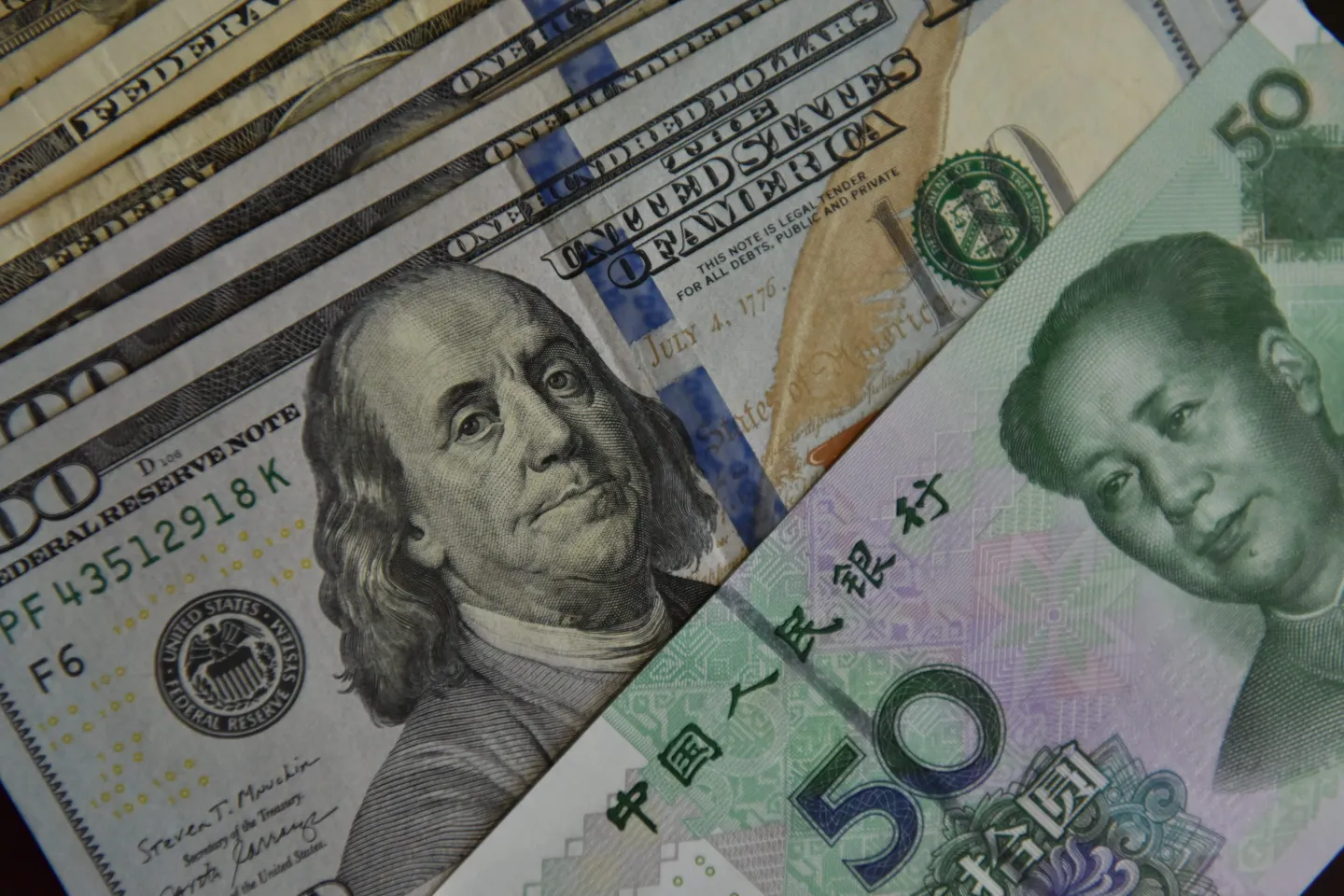Chinese Yuan Climbs Against U.S. Dollar but Slips Versus Global Peers: Understanding the Currency’s Divergent Path
Chinese Yuan Climbs Against U.S. Dollar but Slips Versus Global Peers: Understanding the Currency’s Divergent Path
By
David Goldfarb
Last updated:
September 16, 2025
First Published:
September 16, 2025

Getty Images
Yuan Surges Against the Dollar as Beijing Signals Policy Restraint
The Chinese yuan has staged an unexpected rally against the U.S. dollar in recent weeks, gaining nearly 2% from its August lows and briefly touching 7.15 per dollar in onshore trading. Analysts attribute the rebound largely to Beijing’s subtle but persistent efforts to guide the currency higher, combined with a growing market belief that the People’s Bank of China (PBOC) will hold off on further interest rate cuts in the near term.
By setting stronger-than-expected daily reference rates, the PBOC has effectively sent a signal to markets that it wants to prevent excessive yuan weakness, especially as China seeks to stabilize investor confidence amid a slowing economy and ongoing property sector troubles.
A “Goodwill Gesture” During Sensitive Trade Talks
Goldman Sachs analysts describe this recent appreciation bias in the PBOC’s daily fixing as a “goodwill gesture” toward Washington, as both sides quietly engage in renewed trade and economic dialogues.
China has been eager to cool trade tensions while demonstrating that it can maintain currency stability without resorting to sharp devaluations—a tactic that previously drew accusations of currency manipulation from U.S. officials.
Strengthening the yuan against the dollar helps Beijing showcase its commitment to market stability and its desire to avoid giving Chinese exporters an artificial edge during sensitive negotiations.
Yet Weakness Persists Against Other Global Currencies
Despite the yuan’s recent gains versus the dollar, it has actually weakened against most other major currencies, including the euro, the Japanese yen, and the South Korean won.
On a trade-weighted basis, the yuan has dropped nearly 4% this year, hitting its lowest level since 2015, according to Bloomberg data. This divergence suggests that while the yuan is benefiting from targeted interventions in the USD/CNY pair, it remains under broad pressure due to China’s slower economic growth, weaker consumer demand, and ongoing capital outflows.
Economists warn that this imbalance could spark new trade frictions, as cheaper Chinese exports become more competitive globally, potentially inviting retaliation from trading partners who see the trend as a form of currency-driven dumping.
What This Means for Global Markets and Investors
The mixed performance of the yuan highlights the challenges facing Chinese policymakers as they try to juggle three competing priorities: stabilizing the domestic economy, maintaining foreign investor confidence, and avoiding renewed tensions with major trading partners.
If the PBOC continues to engineer strength against the dollar while the yuan weakens elsewhere, global markets may see further volatility in commodity prices, emerging-market currencies, and Asian equity markets tied to China’s trade cycle.
Investors are closely watching upcoming Chinese economic data releases, particularly export figures and credit growth numbers, for signs of whether the yuan’s rally can be sustained—or if broader weakness will eventually drag it lower even against the dollar.
The Road Ahead
For now, Beijing appears intent on keeping the yuan stable to bolster its credibility and avoid capital flight. But unless China’s underlying growth momentum improves, analysts caution that defending the currency could become increasingly costly and difficult.
The yuan’s unusual divergence underscores a broader truth: currency markets are as much about perception and policy as they are about raw economics—and China is walking a very fine line in trying to manage them both.
Popular articles
Subscribe to unlock premium content
The Rise of Silent Walking Tours in Historic Cities

The Rise of Ultra-Niche Cooking Classes Focused on Historical or Regional Recipes

The Rise of One-Person Dining Experiences for Ultra-Introverts in Major Cities

The Rise of Silent Walking Tours in Historic Cities

The Rise of Ultra-Niche Cooking Classes Focused on Historical or Regional Recipes

The Rise of Silent Walking Tours in Historic Cities









